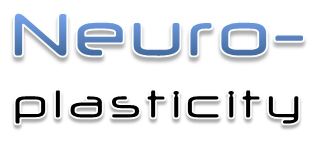One irony is that Fred Gage is one of the world’s leading figures in neuroscience, a discipline which was largely spurred by Phineas Gage’s miraculous survival. Another relevant irony (noted in the Wikipedia article about Fred) is that Phineas (1823 – 1860) had no children
There’s nothing ironic at all about this excellent video, which is a timely briefing on the latest developments in our understanding of the major neuroscience topic of Neural Plasticity (although it would be another irony if it was Neural Plasticity which enabled Phineas to survive)
Here’s another video by Fred Gage about a major announcement of some important recent discoveries:
Here’s a video about Phineas Gage:
http://www.youtube.com/watch?v=yXiM-nDYzX0
Here’s a news story about some major discoveries in the field of neural plasticity, with comments by Fred Gage:
New research into neurogenesis, brain plasticity and memory gives a clue as to how our brains form memories using new brain cells and a tantalizing promise of developing a better memory.
Working with mice, researchers tested how well the mice remembered the location of their last meal (by seeing how easily they could return to the site). When the food locations were well separated the mice did fine. But when the researchers placed the food quite close to a previous location, one group of mice became confused. In these mice the researchers had disabled hippocampal neurogenesis, disrupting the ability of the mice brains to generate new brain cells. Neurogenesis, it seemed, led to better memory formation.
While the function of newborn brain cells is not well understood, many researchers now believe that new cells help in memory formation, but not all memory formation — contextual memories that can get easily confused (like where you left the car keys).
We can encourage neurogenesis through diet, aerobic exercise, and brain exercise.
“We are closer to understanding how memories are truly formed and stored in the brain,” says Craig Stark, director of the Center for the Neurobiology of Learning and Memory at the University of California, Irvine. “If we want to try to help get better memories, we’d darn well better know how the system works.”
Neurogenesis
Neurogenesis occurs in the hippocampus, a brain region important for learning and memory. The hippocampus encodes and prepares new memories for storage, then dispatches them to different parts of the brain. In 1998, scientists showed that the hippocampus produces thousands of new brain cells each month. The nursery for nerve cells is a peanut-sized region of the hippocampus called the dentate gyrus. Approximately 3 to 5 percent of the cells in the dentate gyrus are developing, says Fred Gage, a neuroscientist at the Salk Institute for Biological Studies in La Jolla, Calif.
Many scientists think brain cells produced by neurogenesis in the dentate gyrus are crucial for better memory formation. New nerve cells, “neuronal progenitor cells,” aren’t connected to the brain’s neural network. Over their first month, the new cells begin to mature and establish exploratory connections with the surrounding brain tissue, beginning to elongate and to look more like nerve cells in the rest of the brain.
When the new brain cells finish maturing they integrate into the rest of the hippocampus, where they remain for a lifetime. “Most of the dentate gyrus is formed after birth,” Gage says. “A lot of it is formed in the first four years of life. That’s when you’re getting your baseline of memories. Then a low level of neurogenesis persists.”
Better Memory
Gage and others hypothesize that these adult-born nerve cells assist in a particular kind of memory called pattern separation, which keeps similar experiences from overlapping.
“New neurons are helping to distinguish between events that are close to each other,” Gage says. “It’s like a bar code. You put the bar code of the [memory] into the dentate. It’s coded with lots of information.”
For better memory formation, the brain stores the context of the memory, says Raymond Kesner, a psychology professor at the University of Utah in Salt Lake City. “If you try to remember a story, time and place will always be important.”
In experiments described in 2008 in Hippocampus, Kesner’s team demonstrated that rats with a healthy dentate gyrus had a better memory for object locations than those with a disabled dentate gyrus. His experiments support the idea that neurogensis in the dentate gyrus helps the brain remember the context of a memory.
In 2010, in Hippocampus, Stark and his colleagues new neurons in the dentate gyrus of aged brains are relatively inactive or slow to make connections. In older tissue, the newborn nerve cells appear to require greater contrasts among images and experiences before reacting and capturing a memory. As people age, Stark says, “we seem to be less good about details and specifics.”
How To Improve Memory
Researchers have begun to pinpoint factors that decrease neurogenesis in the dentate — including stress, alcohol consumption and, according to a study in Neuroscience Letters in 2010, a high-fat diet. On the plus side physical activity and working memory brain training exercises can increase neurogenesis and lead to a better memory.
Henriette van Praag of the Neuroplasticity and Behavioral Unit at the National Institute on Aging in Bethesda, Md. reported last year in the Proceedings of the National Academy of Sciences that mice that exercise regularly perform better in pattern separation tests.
Compounds in fruits, vegetables and herbs also appear to enhance the survival of new brain cells. Omega-3 fatty acids found in fish such as salmon and sardines, flavonoids found in non-green vegetables and berries, and curcumin, a common component of curry. (Epicatechin, from green tea and chocolate, doesn’t appear to promote the birth of neurons directly but does encourage existing neurons to sprout more connections to neighbors, improving memory. The effect is particularly strong when combined with exercise.)


